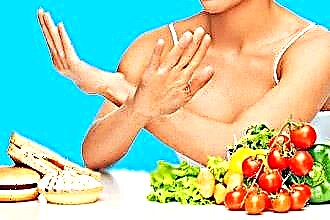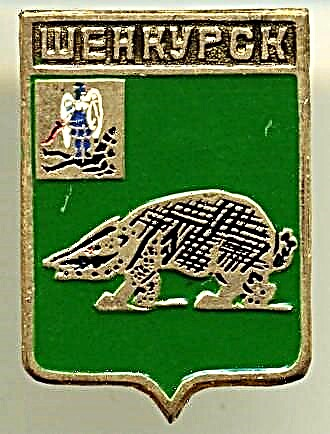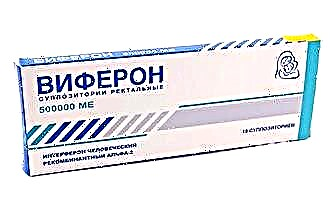Vegetovascular dystonia (VVD) is a condition in which dysfunction of the nervous system, a decrease in vascular tone, and a violation of hormonal metabolism are observed. The development of pathology provokes an irregular work schedule, insufficient rest, stressful situations, the impact of the external environment and concomitant diseases. Most often, the cardiac type of dystonia develops, the severity of the symptoms of which depends on the degree of cardiac disorder. If you have heart pain, palpitations, or feeling unwell, see your doctor.
What is cardiac type VSD?
 In the conditions of modern life, many factors contribute to the development of dystonia: constant stress and overload at work, personal psychological problems, unhealthy diet, disturbed sleep and rest, untimely treatment of major diseases. As a rule, the first onset of dystonia is determined in young adolescence, hormonal changes provoke a violation of the autonomic nervous system.
In the conditions of modern life, many factors contribute to the development of dystonia: constant stress and overload at work, personal psychological problems, unhealthy diet, disturbed sleep and rest, untimely treatment of major diseases. As a rule, the first onset of dystonia is determined in young adolescence, hormonal changes provoke a violation of the autonomic nervous system.
Women are more concerned about the symptoms of the disease than men. In more than 50% of patients, dystonia has the character of psychoemotional disorder, increased anxiety with insomnia and frequent mood swings. In half of the cases, the cause of the disorder is hormonal imbalance at the age of 14-18, during pregnancy or menopause. Men often have a syndrome after severe physical fatigue, serious experiences, an infectious or viral disease.
For the cardiac form of dystonia, cardiac disorders are characteristic, which occur with syndromes:
- Cardialgia.
- Tachycardia.
- Bradycardia.
- Arrhythmias.
A distinctive feature of this form of VSD is pain in the region of the heart, in some cases in nature and intensity, reminiscent of an attack of angina pectoris or heart attack. However, when examining, signs of acute cardiac pathology are not found.
What are the most common symptoms of pathology?
Vegetovascular dystonia of the cardiac type proceeds with severe cardio-neurotic symptoms. A combination of pain syndrome, instability of blood pressure numbers and cardiac arrhythmias are characteristic. At the same time, painful sensations in the chest have no connection with a heart attack and are not stopped by taking nitrates in tablets.
Diagnostics of the type of dystonia is of certain difficulty, since with hypertensive or hypotonic form of the VSD, there are also disturbances in the activity of the heart.
For cardiac dysfunction of the autonomic nervous system, the following clinical symptoms are characteristic:
- discomfort, pressing or squeezing sensations in the region of the heart after stress or overwork, against the background of general malaise;
- deterioration against the background of a change in weather
- unexpressed chest pain, aching or stabbing;
- when the condition worsens, a burning sensation appears in the heart;
- cardiopalmus;
 feeling of "lump in the throat";
feeling of "lump in the throat";- shortness of breath against the background of the above symptoms;
- with weakness, there may be a slow heartbeat;
- sweating, pallor of the skin, chills;
- trembling in the arms and legs;
- headaches or dizziness;
- violation of the rhythm of the heartbeat, irregular pulse;
- nausea or vomiting;
- increased anxiety, bad mood, hysteria and tearfulness in women;
- depressed mood in men;
- general decrease in working capacity, drowsiness;
- weakness throughout the day;
- intermittent shallow sleep or insomnia;
- feeling faint after a sufficient night's sleep.
Treatment
The basis of VVD therapy for cardiovascular disorders is a set of measures that have a positive effect on the nervous system, eliminating the effects of harmful factors. Non-drug therapy helps to improve the patient's state of health and reduce the severity of symptoms:
 Normalization of the schedule of rest and work. The night's sleep should be at least 8-10 hours. In case of physical or emotional fatigue, a daytime sleep of 30 - 60 minutes is indicated.
Normalization of the schedule of rest and work. The night's sleep should be at least 8-10 hours. In case of physical or emotional fatigue, a daytime sleep of 30 - 60 minutes is indicated.- Nutrition correctness control. To recover, it is necessary to include fresh vegetables and fruits in the diet, eat meat, sea fish, cereals.
- Foods with a high potassium content have a positive effect on the state of the cardiovascular system. They are rich in dried fruits, nuts. For allergies, the intake of B vitamins with Magnesium and Potassium is indicated.
- Energy drinks, strong coffee, alcohol and smoking should be excluded, since these factors provoke overexcitability of the nervous system, which is manifested by nervousness and insomnia.
- For the period of treatment, physical activity should be reduced. Reduce sports activities to 30 - 45 minutes 2 - 3 times a week. When working in difficult working conditions, consider changing employment.
Drug therapy is indicated for patients with severe cardialgic syndrome, with the ineffectiveness of non-drug recommendations.
Doctors, taking into account the symptoms and previous treatment of VVD by cardiac type, prescribe regimens for taking such drugs:
- Sedatives based on herbal ingredients: Valerian, Motherwort, Persen, Novopassit or analogues.
- Nootropics and Cerebroprotectors for improving cerebral blood flow: Piracetam, Cerebrolysin, Nicergoline, Cavinton.
- Monocyclic or tricyclic antidepressants for the correction of psychoemotional state, normalization of sleep, rest, improvement of mood. Strictly by prescription.
- In cases of severe psychoneurotic disorder, tranquilizers are indicated, also according to the prescription.
- Fortifying agents, vitamin and mineral compositions based on Potassium and Magnesium: Vitamin complex B2, B6, B12, Chromium, Selenium and Zinc.
- Drugs for normalizing blood pressure or heart rate, taking into account the type of VSD, hypertensive or hypotonic.
 Angioprotectors to protect blood vessels, normalize their tone: Rutin, Askorutin, Gingko-Biloba, Betagistin.
Angioprotectors to protect blood vessels, normalize their tone: Rutin, Askorutin, Gingko-Biloba, Betagistin.- Antiarrhythmic drugs for detecting arrhythmias: Beta - blockers, calcium channel blockers.
- Sleep pills to normalize sleep: Melatonin, Persen-forte, Fitosedan, Donormil.
- With reduced pressure, tinctures of Ginseng, Schisandra, Echinacea.
With VSD, symptoms can manifest themselves with varying severity. In case of pain in the heart and related complaints, you should consult a physician, neuropathologist or cardiologist. After excluding an attack of angina pectoris or heart attack, the doctor will prescribe a diagnostic examination. In the absence of acute cardiac pathology and diagnosis of VSD, treatment of vegetative-vascular dystonia will be indicated. The choice of a particular drug depends on many factors: the age and sex of the patient, the presence of concomitant endocrine or neurological diseases, the state of the body as a whole.
After taking medications, it is recommended to continue the preventive and general maintenance course in the resort areas or sanatoriums. With VSD, physiotherapy is shown: a course of acupuncture, massage or a Sharko contrast shower. In the case of a cardiac type of dystonia, after normalization of the condition within 2 to 4 months, physical fatigue should be avoided. As physiotherapy exercises, swimming, slow walking, jogging for short distances in a calm rhythm are shown. To improve the emotional state, sessions with a psychotherapist are used.
Conclusions
The disease we are discussing refers to a chronic form of disorder of the autonomic nervous system. Timely initiation of treatment allows you to eliminate the manifestation of VSD symptoms, however, to maintain the effect, regular preventive therapy is required. The drug regimen is selected by the doctor on an individual basis, taking into account the severity of the clinical symptoms of cardiac syndrome. As the condition improves, physiotherapy and spa treatment are prescribed.

 feeling of "lump in the throat";
feeling of "lump in the throat"; Normalization of the schedule of rest and work. The night's sleep should be at least 8-10 hours. In case of physical or emotional fatigue, a daytime sleep of 30 - 60 minutes is indicated.
Normalization of the schedule of rest and work. The night's sleep should be at least 8-10 hours. In case of physical or emotional fatigue, a daytime sleep of 30 - 60 minutes is indicated. Angioprotectors to protect blood vessels, normalize their tone: Rutin, Askorutin, Gingko-Biloba, Betagistin.
Angioprotectors to protect blood vessels, normalize their tone: Rutin, Askorutin, Gingko-Biloba, Betagistin.

